
Proposed Communication Strategy
Shift
In the United States, nearly 70 percent of all drug overdose deaths in 2017 and 2018 involved an opioid. This trend shows no signs of stopping, as drug overdose deaths have spiked an average of 13 percent in 2019 alone.
Harm Reduction strategies are a set of policies, programs, services, and actions that aim to reduce harm to individuals, communities, and society related to drugs. Harm Reduction tactics are science-backed can help lead to less overdose death. Our cohort was tasked with developing communication strategies for improving awareness and support for Harm Reduction tactics.
We worked closely with our Harm Reduction Expert partners, The Camden Coalition, Prevention Point, and The Northern New Jersey Medication-Assisted Treatment Center of Excellence. These partners graciously allowed us to interview them over countless zoom calls, invited us to shadow their clinics, invited us into their planning meetings, and critiqued and provided feedback while developing our proposal.
shift — a hub that bridges the mobile installation and social media communication strategies outlined in this document — is a small step in combating the Opioid Crisis. By reshaping the narrative around Harm Reduction, shift builds off the work of those who have dedicated their lives to helping people with OUD, promotes awareness around Harm Reduction, and demonstrates that people who use drugs are patients who need care — not moral failures. shift seeks to meet people where they are with compassion and without judgment.
shift aims to shift people's attention towards the existing harm reduction framework that is proven to work utalizing a physical and digital resource center that is scalable and expandable. Shift consists of a
-
Mobile installation helps build empathy towards people with OUD and those in recovery by telling stories
-
Social media campaign drives awareness of harm reduction and presents it in an fun and shareable way that is still rooted in the medical data and science
We used a human-centered design approach and worked through the understanding, observing, defining, ideating and prototyping phases over an eight week period.
The Design Process
The Opioid Epidemic is a public health crisis with far-reaching consequences and a wide range of stakeholders. Understanding these stakeholders is crucial for creating messaging that reaches the right people and changes their perceptions about Harm Reduction.
A stakeholder's map was developed to provide a visual representation of the people impacted by the Opioid Crisis — including patients, their support networks, surrounding community, government, and medical providers — and how they are connected. This demonstrates all the possible audiences that Harm Reduction messaging could reach, where they intersect, and what their interests might be.
Stakeholder's Map
Summary Diagram
A Summary Diagram is a representation of the systems impacted by the Opioid Epidemic and where opportunities exist for visual communication to improve knowledge, change negative perceptions, and boost support for Harm Reduction.
With the guidance of our partners, our cohort developed a summary diagram that is divided into six areas: Perceptions, Education, Access, Community and Support, Health, and Policy and Structure. In each area, the map defines where there are positive trends, negative perceptions, and areas of opportunity around improving Harm Reduction awareness.
Personas are fictitious characters backed by data, research, and fieldwork that represent the types of people impacted by the Opioid Epidemic and Harm Reduction. Developing personas is a key step in the design process that helps creators better understand the needs, desires, challenges, and goals of various stakeholders before generating targeted communication tools and strategies.
Personas were created to represent active users, people in recovery, and the people in their support networks — as well as stakeholders in government, medicine, and business. Going through the process of building these characters was integral to understanding the impact of the Opioid Crisis and how designers might engage a wide range of audiences in conversations about Harm Reduction.
Personas
Proposed Communication Tools
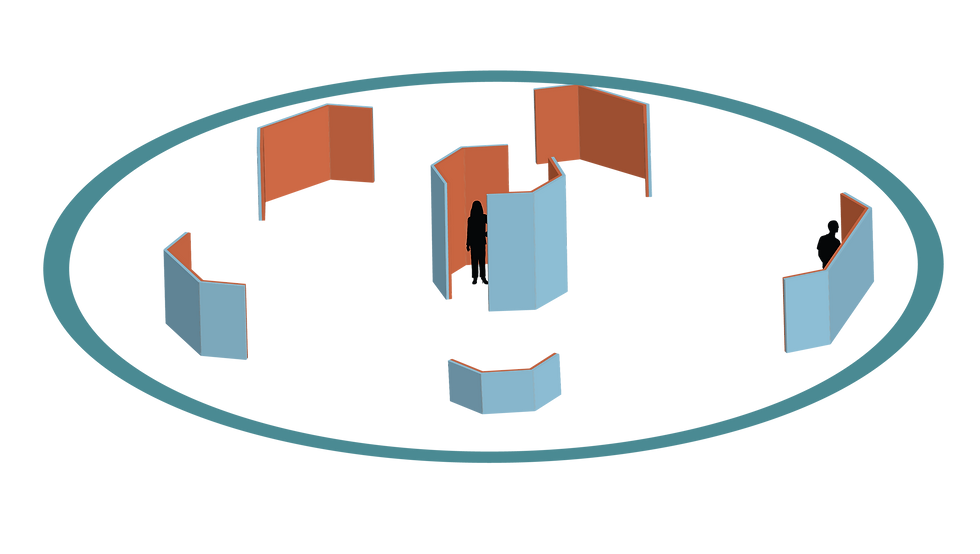
Mobile Installation
To promote awareness around Harm Reduction — and specifically improve knowledge about Narcan — an outdoor, mobile installation will showcase personal narratives of people affected by OUD in key, walkable locations throughout Philadelphia.
This non-permanent environment allows these installations to be placed in locations where the messaging is needed most. This format also allows us to leverage its ephemeral nature to encourage people to visit before it "moves on." Placing the installations in public areas allows people to happen upon them without needing the "buy-in" that's associated with visiting a museum. This allows people to discover the installation on their lunch break, during their walk to work, and might encourage people to participate that wouldnt typically want to participate in this content.
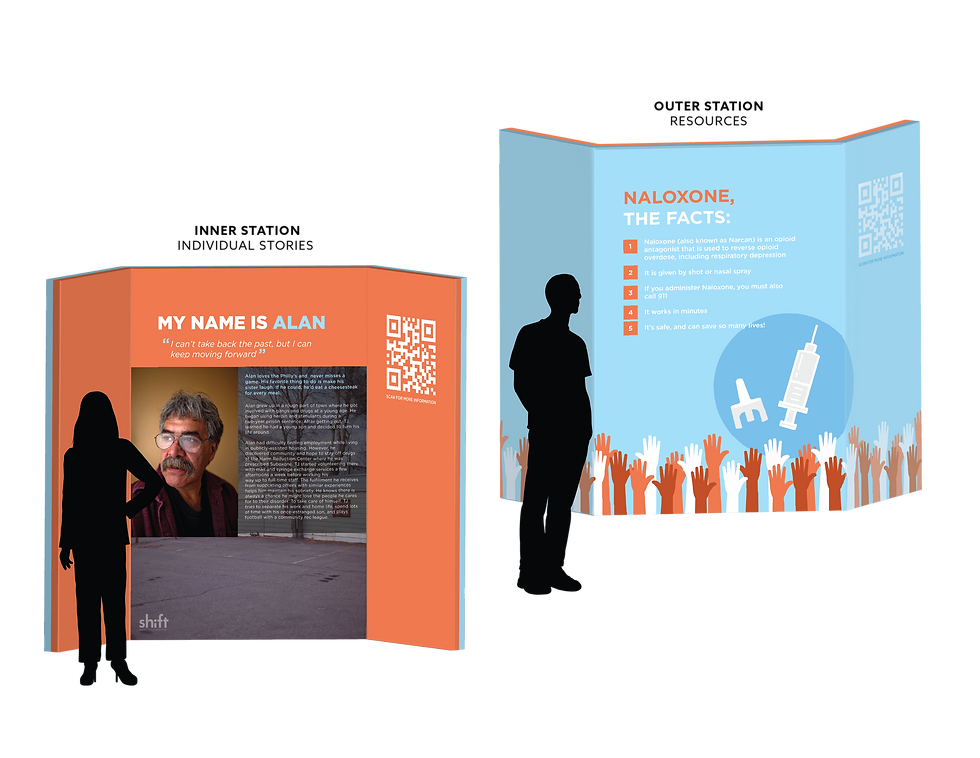
The installation will be composed of multiple stations. Each inner station will feature stories of stakeholders of OUD. These panels can stand alone to tell these stories but encourages visitors to scan QR codes linking to supplementary, content-rich multimedia (videos, audio stories, and music) to create a more enhanced experience. Visitors can share these stories over email and social media while still at the installation, spreading it's impact even further beyond the immediate site of the mobile installation.
The outer stations provide location-specific resources and tips so that visitors may locate their nearest harm reduction center, find out where they can become Narcan trained, and much more so they may either seek the treatment they need or become harm reduction advocates in their area.

The experience will culminate to a photo opportunity that leverages social currency and encourages posting to social media, resulting in an awareness of the installation to encourage visitation and awareness about Harm Reduction tactics.

Digital Connection of the Messaging Journey
QR codes connect to a more enriched experience and lead visitors to the shift: Harm Reduction Hub website where they can
-
Continue learning about these case studies
-
Find harm reduction resources in their area in the privacy of their own home
-
Share the content on social media
-
Gain access to printable resources, encouraging them to DIY their own "installations," whether on a community message board, telephone poles, or building one themselves. The content in the hub would be open source, and visitors would be able to submit their own stories for approval to be included in the hub / future iterations of installations
Using the QR codes also allows the installation to be advertised in high-traffic areas such as transportation stations where people in need of these services may be seeking shelter and where many people who may want to become Harm Reduction advocates will see it.

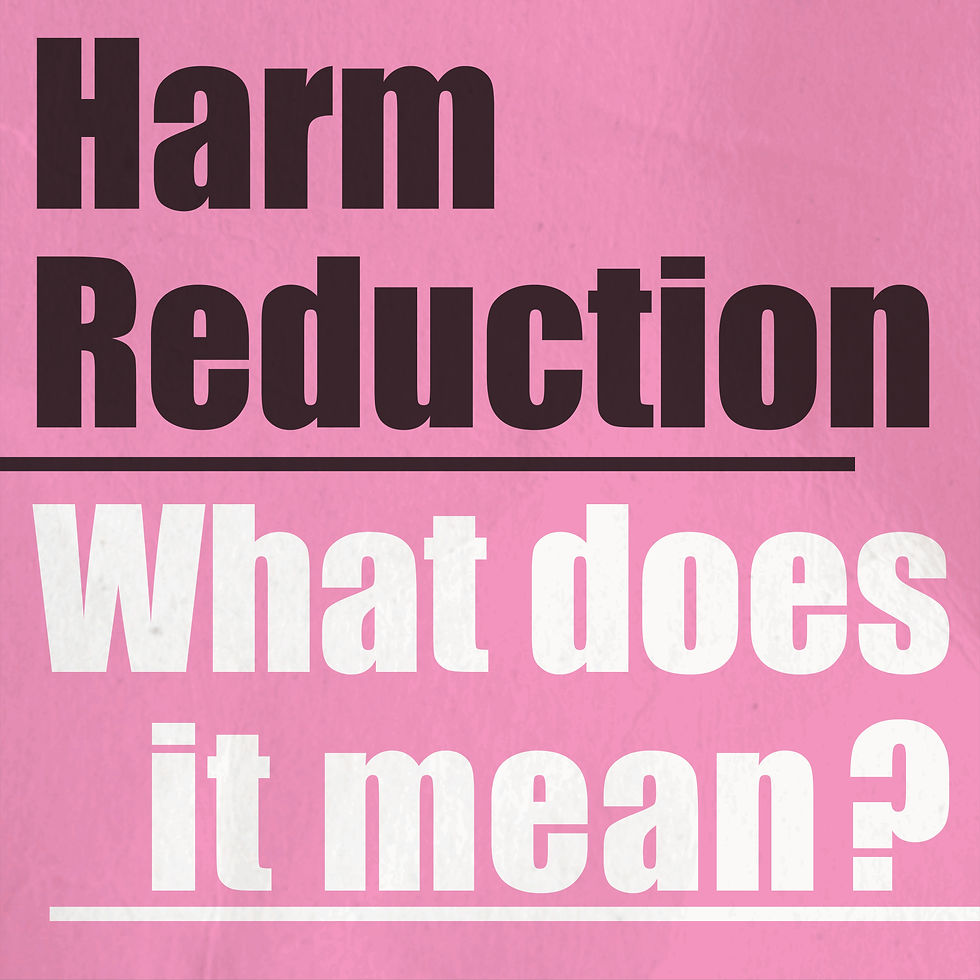
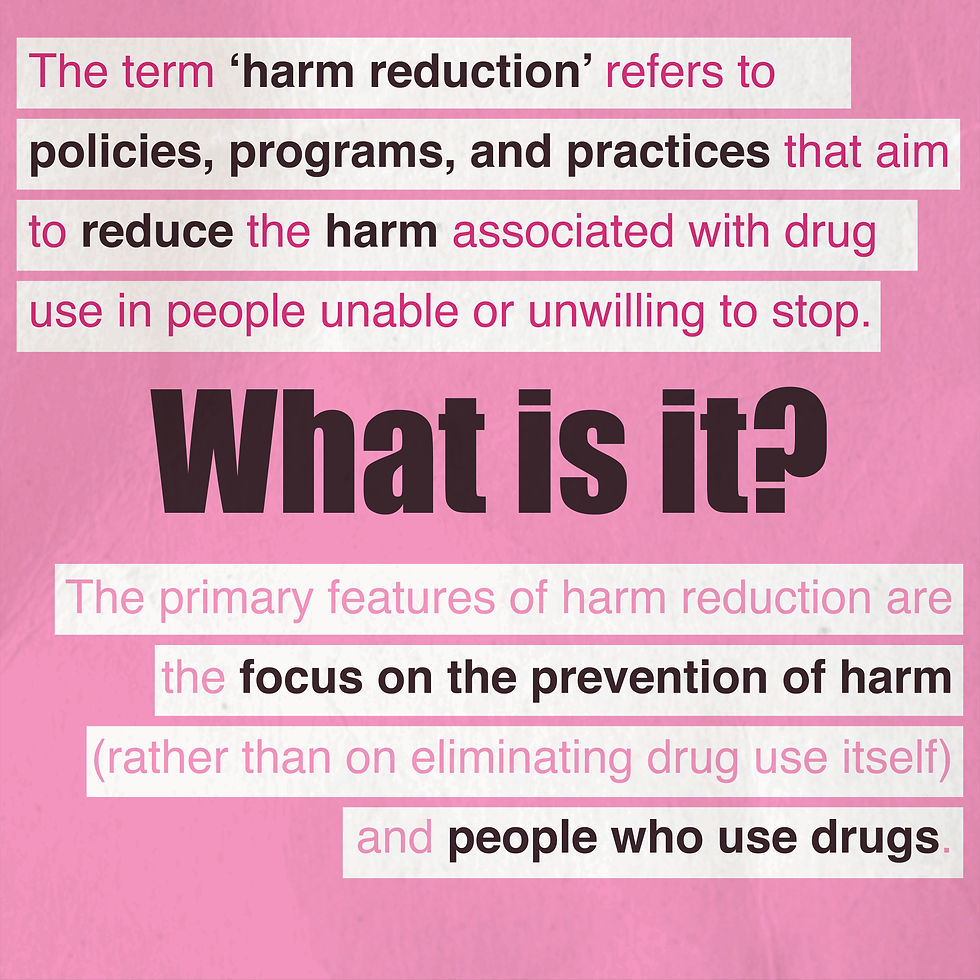
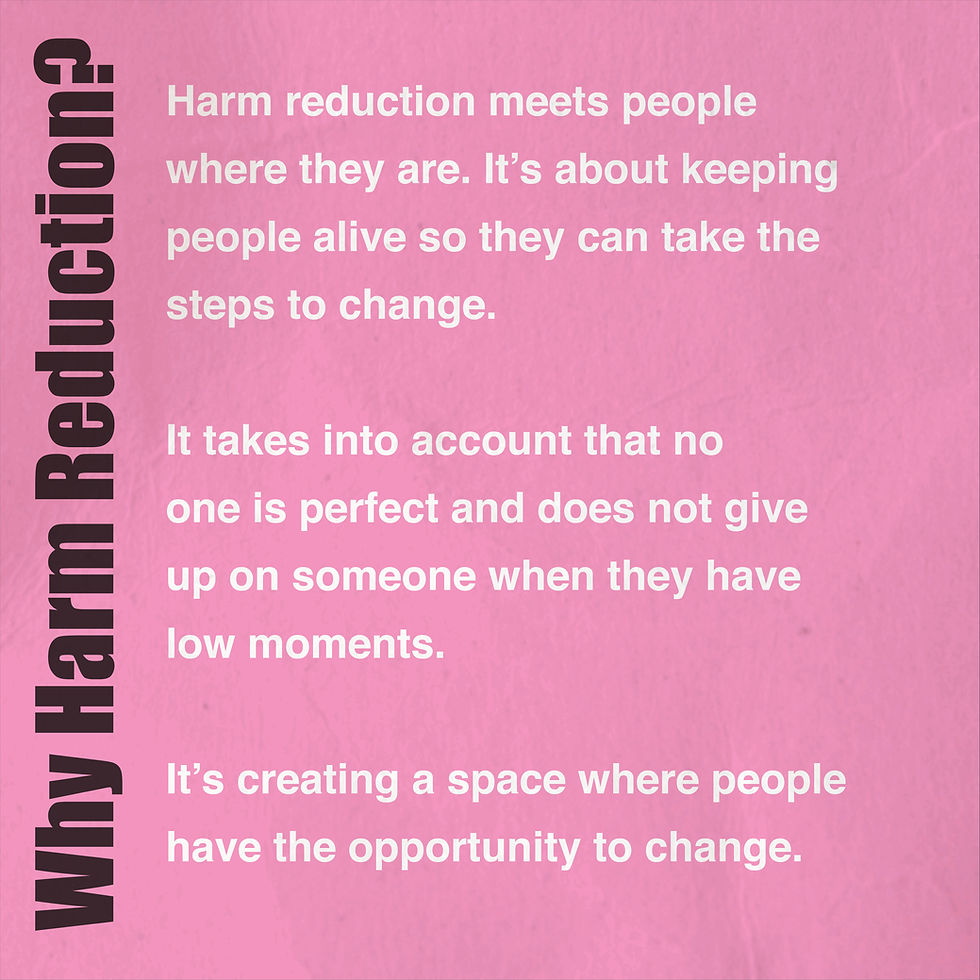

Social Media Campaign
A social media campaign allows for immediate application of awareness resources over many channels. Nearly 80% of all adult Americans use social media in some form. As social media becomes even more entrenched in everyday use, that figure is likely to grow.
This campaign would feature a diverse style in graphics allowing our messaging to permeate through the community and integrate into other content without feeling like its coming from a corporation. The aim is to start a conversation; we want people to feel comfortable using these resources.
The social media campaign will be released as a kit-of-parts to centers practicing harm reduction, providing them the resources they need to post autonomously to their social channels. We'd encourage including the #shiftharmreductionhub hashtag onto content so viewers may find their way back to the hub.
We've identified various hashtags to target for this initiative, including ones with little to no content that these centers can "own" and hashtags of related content that might lead people to harm reduction through learning another topic.
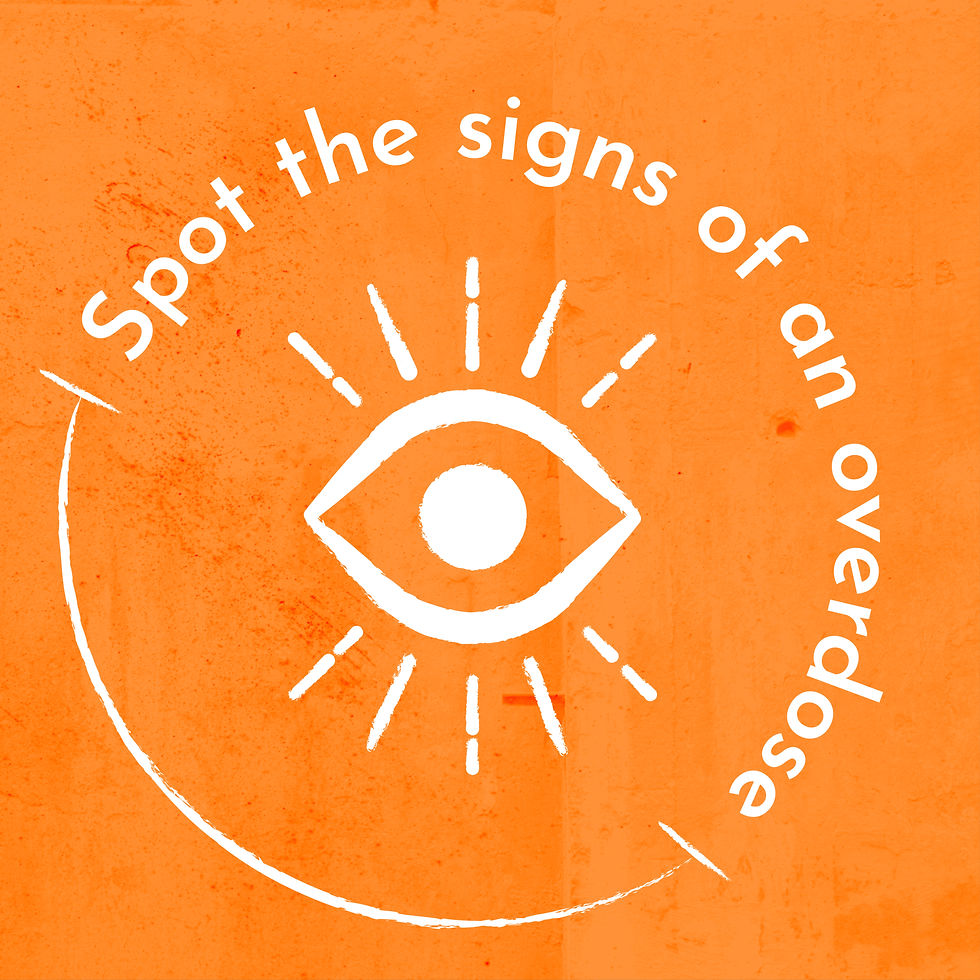


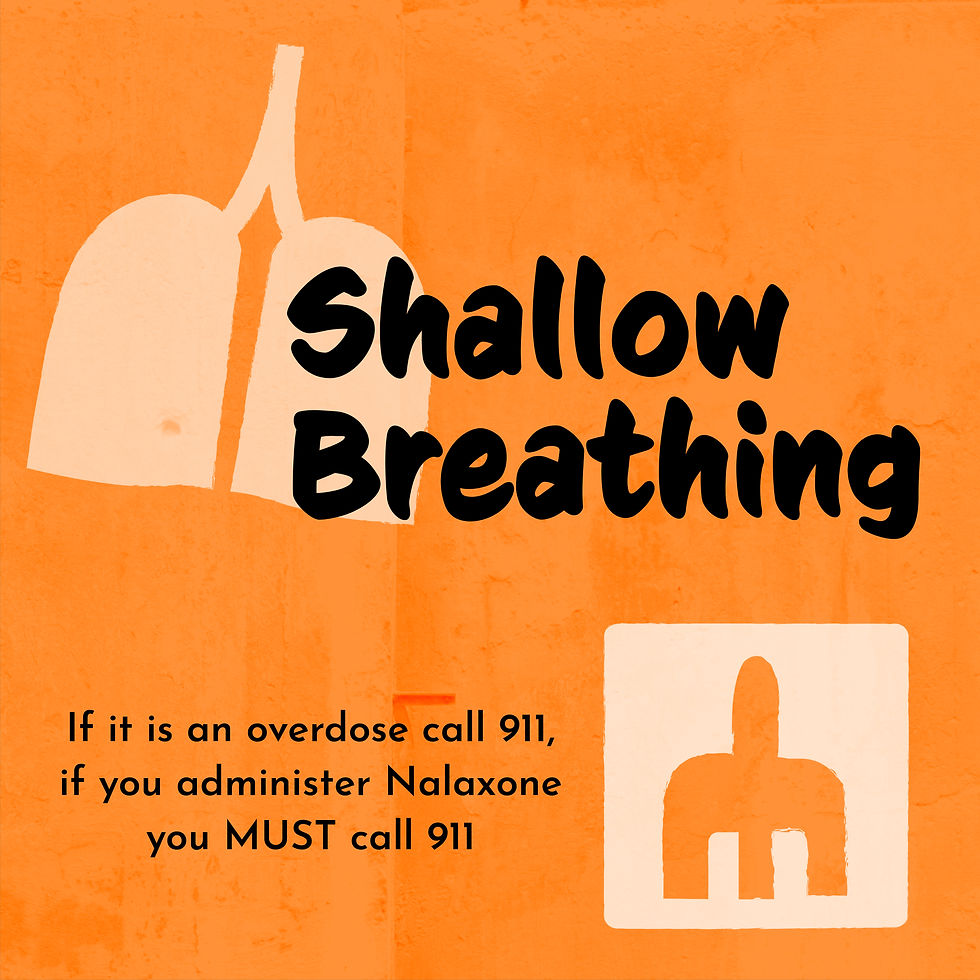
Proposed communication design strategies for improving awareness and support for harm reduction tactics to treat Opioid Use Disorder.
This proposal was completed by the inaugural class of the MS Health Communication Design program at Thomas Jefferson University along with our partners, Camden Coalition, Prevention Point, and The Northern New Jersey Medication-Assisted Treatment Center of Excellence.
Services:
Field Work / Market Research
Human-Centered Design Process
Stakeholders Map Development
Persona Development
Exhibit Design
Social Media Strategy
Shift: A Harm Reduction Hub
